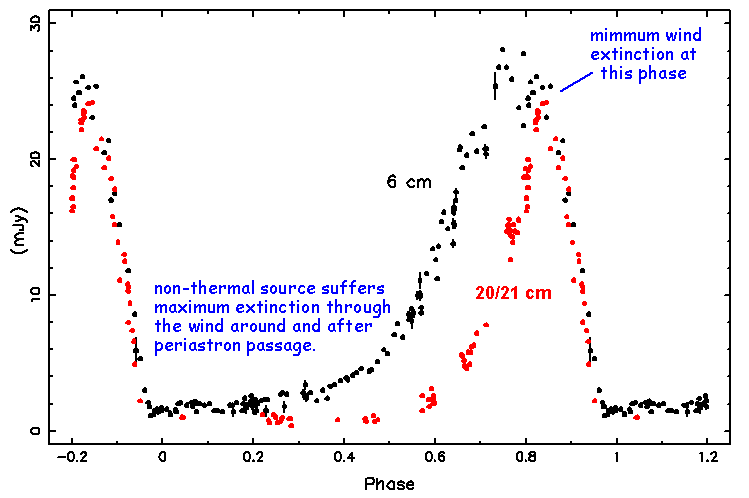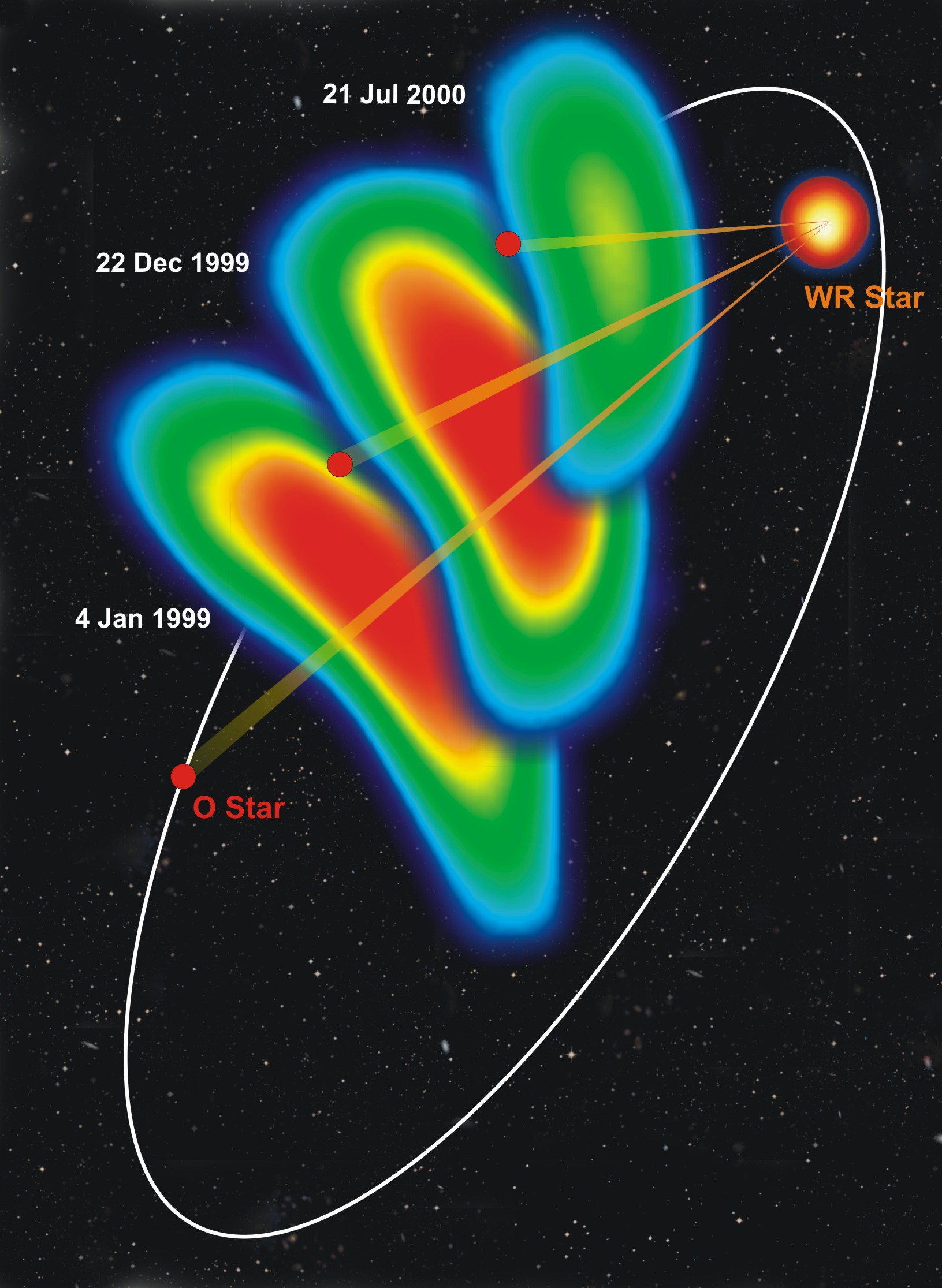 |
Radio flux variations of WR 140 |
| Links
|
Like all hot, luminous stars,
WR 140 emits free-free radiation from its stellar winds, readily observed
in the radio because the winds are so extended. In addition, the
collision of the WR and O5 stellar winds results in the acceleration of
electrons to relativistic energies and, given a magnetic field,
the production of synchrotron radiation between the two stars.
This emission is intrinsically brighter than the
free-free wind emission but, because it arises deep within the WR
stellar wind, we can observe it only if the wind extinction along our
sight-line to the synchrotron source is small enough.
There is a good correlation [4] between
observation of non-thermal radiation from WR systems and their
separation as inferred from their periods; in the widest systems
like WR 147, it is observed all the time.
In the case of WR 140, the extinction to the wind-collision
region varies with the orbit, resulting in
the periodic extinction and unveiling of the non-thermal source.
Spectacular high-resolution VLBA imaging [5] of
the non-thermal source shows it to have the curved shape expected from
formation in the wind-collision region and to move round as the binary
orbit progresses. The radio, X-ray and gamma-ray emission near radio
maximum has been modelled by Pittard & Dougherty.
|
| Right: Radio fluxes from WR 140 at
wavelengths of 6cm and 20 or 21 cm observed with the VLA or WSRT.
The maximum emission is associated with minimum
extinction along the sightline to the region between the stars where the
synchrotron emission arises. Around periastron, only the thermal emission
from the stellar wind is observed. [1],[2],[3] |
 |
| Right: A montage of 8.4-GHz VLBA observations of WR 140
at orbital phases 0.73, 0.85 and 0.93 showing rotation of the radio source and
wind-collision region as the orbit progressed. The inferred positions
of the O5 star are marked on the orbit deduced by Dougherty
et al.[6] from the VLBA observations,
together with the RV orbit,
and the separation of the stars[5].
|
 |
rev: 29 Feb 2016
Peredur Williams
[Home page]
|
[1] P.M. Williams et al.
MNRAS 243, 662, 1990
[2] P.M. Williams et al.
A&A 291, 805, 1994
[3] R.L.White & R.H. Becker
ApJ 451, 352, 1995
[4] S.M. Dougherty & P.M. Williams
MNRAS 319, 1005, 2000
[5] J.D. Monnier et al.
ApJL 602, 57, 2004
[6] S.M. Dougherty et al.
ApJ 623, 447, 2005
[7] J.M. Pittard & S.M. Dougherty
MNRAS 372, 801, 2006
|

